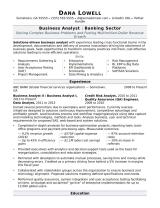What should be included in the financial analysis of a business?
A thorough financial analysis of a business is essential for assessing its financial health, making informed decisions, and planning for the future. It typically involves a comprehensive review of the company's financial statements and other relevant financial data. Here are the essential components that should be included in a financial analysis of a business:
Income Statement (Profit and Loss Statement):
- The income statement provides a summary of the company's revenues, costs, and expenses over a specific period (usually a fiscal year). It includes components such as:
- Gross profit
- Operating income
- Net income
- Analyzing the income statement helps assess the company's profitability and performance.
- The income statement provides a summary of the company's revenues, costs, and expenses over a specific period (usually a fiscal year). It includes components such as:
Balance Sheet (Statement of Financial Position):
- The balance sheet presents a snapshot of the company's financial position at a specific point in time. It consists of:
- Assets (current and non-current)
- Liabilities (current and non-current)
- Shareholders' equity
- It helps evaluate the company's financial stability, solvency, and liquidity.
- The balance sheet presents a snapshot of the company's financial position at a specific point in time. It consists of:
Cash Flow Statement:
- The cash flow statement tracks the company's cash inflows and outflows, categorizing them into operating, investing, and financing activities.
- Analyzing the cash flow statement provides insights into a company's ability to generate and manage cash.
Financial Ratios:
- Various financial ratios are calculated using data from the financial statements. These ratios help assess different aspects of a company's financial performance and condition, including:
- Liquidity ratios (e.g., current ratio, quick ratio)
- Profitability ratios (e.g., return on assets, return on equity)
- Solvency ratios (e.g., debt-to-equity ratio)
- Efficiency ratios (e.g., inventory turnover, accounts receivable turnover)
- Ratio analysis is a critical component of financial analysis, as it allows for benchmarking against industry standards and historical performance.
- Various financial ratios are calculated using data from the financial statements. These ratios help assess different aspects of a company's financial performance and condition, including:
Revenue Analysis:
- Analyze the sources of revenue, revenue trends, and the impact of various revenue streams on overall financial performance.
Expense Analysis:
- Examine the breakdown of operating expenses, cost of goods sold, and other expenditures. Identify any cost-saving opportunities.
Working Capital Analysis:
- Evaluate the company's working capital, which is the difference between current assets and current liabilities. A positive working capital is essential for day-to-day operations.
Debt Analysis:
- Review the company's debt structure, including the types of debt, interest rates, and maturity dates. Assess the company's ability to manage and service its debt.
Investment Analysis:
- Examine the company's investments in assets, such as property, plant, and equipment, and assess their impact on future growth and profitability.
Financial Forecast and Projections:
- Create financial projections to estimate future financial performance, including revenue, expenses, and cash flows. This can be essential for strategic planning and budgeting.
Competitor Analysis:
- Compare the company's financial performance and ratios to those of its competitors to identify strengths and weaknesses.
Management Discussion and Analysis (MD&A):
- Review the company's annual report and financial filings, which often include management's narrative on financial performance, challenges, and strategies.
Risk Assessment:
- Identify and assess financial risks that could impact the company, such as market risks, credit risks, and operational risks.
Industry and Economic Trends:
- Consider how industry-specific and economic trends may affect the company's financial performance.
Non-Financial Metrics:
- In addition to financial data, consider non-financial metrics related to customer satisfaction, employee retention, and other key performance indicators that can impact financial outcomes.
The financial analysis should provide a holistic view of the business's financial health and performance. It's crucial for stakeholders, including investors, lenders, management, and analysts, to make informed decisions, set strategic goals, and assess the company's ability to generate profits and meet its financial obligations.
What should be included in a comprehensive financial analysis of a business?
A comprehensive financial analysis of a business should include the following:
- Income statement analysis: This analysis examines the company's revenue, expenses, and income over a period of time. It can be used to assess the company's profitability and growth trends.
- Balance sheet analysis: This analysis examines the company's assets, liabilities, and equity at a specific point in time. It can be used to assess the company's financial structure and liquidity.
- Cash flow statement analysis: This analysis examines the flow of cash into and out of the company over a period of time. It can be used to assess the company's ability to generate cash and meet its financial obligations.
- Ratio analysis: This analysis compares different financial statement line items to each other. It can be used to assess the company's profitability, efficiency, and risk profile.
- Industry analysis: This analysis compares the company's financial performance to that of its peers in the same industry. It can be used to identify the company's strengths and weaknesses relative to its competitors.
How do you assess the financial health and performance of a company?
To assess the financial health and performance of a company, you can consider the following factors:
- Profitability: Is the company profitable? Is its profitability improving or declining?
- Growth: Is the company's revenue and income growing? Is it growing faster or slower than its competitors?
- Efficiency: Is the company using its resources efficiently? Is it able to generate a high return on its assets and equity?
- Liquidity: Does the company have enough cash and other liquid assets to meet its short-term obligations?
- Solvency: Does the company have enough assets to cover its liabilities?
- Risk: Is the company exposed to a high level of financial risk?
Importance of financial statement analysis in business evaluation:
Financial statement analysis is important in business evaluation because it provides insights into the company's financial health and performance. This information can be used to make informed decisions about whether to invest in the company, lend to the company, or acquire the company.
Financial statement analysis can also be used to identify areas where the company can improve its financial performance. For example, if the company's profitability is declining, financial statement analysis can be used to identify the factors that are contributing to the decline. This information can then be used to develop strategies to improve profitability.
Key metrics and indicators used in financial analysis:
There are a number of key metrics and indicators that are used in financial analysis. Some of the most common include:
- Profitability ratios: These ratios measure the company's profitability, such as net profit margin, return on assets, and return on equity.
- Efficiency ratios: These ratios measure how efficiently the company is using its resources, such as inventory turnover ratio and accounts receivable turnover ratio.
- Liquidity ratios: These ratios measure the company's ability to meet its short-term obligations, such as current ratio and quick ratio.
- Solvency ratios: These ratios measure the company's ability to meet its long-term obligations, such as debt-to-equity ratio and times interest earned ratio.
How can financial analysis help in making informed business decisions?
Financial analysis can help in making informed business decisions by providing insights into the company's financial health and performance. This information can be used to make decisions about the following:
- Investment: Whether to invest in the company
- Lending: Whether to lend to the company
- Acquisition: Whether to acquire the company
- Pricing: How to price the company's products and services
- Budgeting: How to allocate the company's resources
- Expansion: Whether to expand the company's operations
- Divestment: Whether to divest a part of the company
By conducting financial analysis, businesses can make more informed decisions that can lead to improved financial performance and long-term success.












